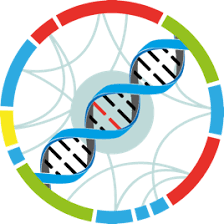Study : H2AK121ub in Arabidopsis favors a less accessible chromatin state at transcriptional regulation hotspots [ATAC-seq]
Identification
Name
H2AK121ub in Arabidopsis favors a less accessible chromatin state at transcriptional regulation hotspots [ATAC-seq]
Identifier
dXJuOkVWQS9zdHVkeS9QUkpOQTY0NzIxMg==
Description
Although it is well established that Polycomb Group (PcG) complexes maintain gene repression through the incorporation of H2AK121ub and H3K27me3, little is known about the effect of these modifications on chromatin, which is fundamental to understand PcG function. Here, by integrating chromatin accessibility, histone marks and expression analyses in different Arabidopsis PcG mutants, we show that H2AK121ub marking favors a less accessible but still permissive chromatin at transcriptional regulation hotspots, which can be further reduced by EMF1 and H3K27me3. We found that when acting concurrently, H2AK121ub and H3K27me3 establish an inaccessible but responsive chromatin to marks levels, allowing gene reprograming. Conversely, when H3K27me3 is alone, chromatin is less responsive, indicating that H2AK121ub-marked hotspots are required for transcriptional responses. Interestingly, despite the loss of H2AK121ub and H3K27me3 leads to increased chromatin accessibility, this is not necessarily accompanied by transcriptional activation, indicating that gene expression is not always predictive of accessible chromatin. Overall design: Arabidopsis seedlings Col-0 wild type, atbmi1abc triple mutant, clf28/swn7 double mutant, emf1-2 mutant, ring1ab double mutant and lhp1 mutant were grown under long-day condition (16 hr of light/8 hr of dark) at 22 °C on MS agar plates containing 1% sucrose and 0.7% agar and collected at 10 DAG (days after germination). Two independent biological replicates were considered for ATAC-seq and ChIP-seq data whereas three independent biological replicates were considered for RNA-seq data.
Genotype
| Accession number | Name | Taxon |
|---|
